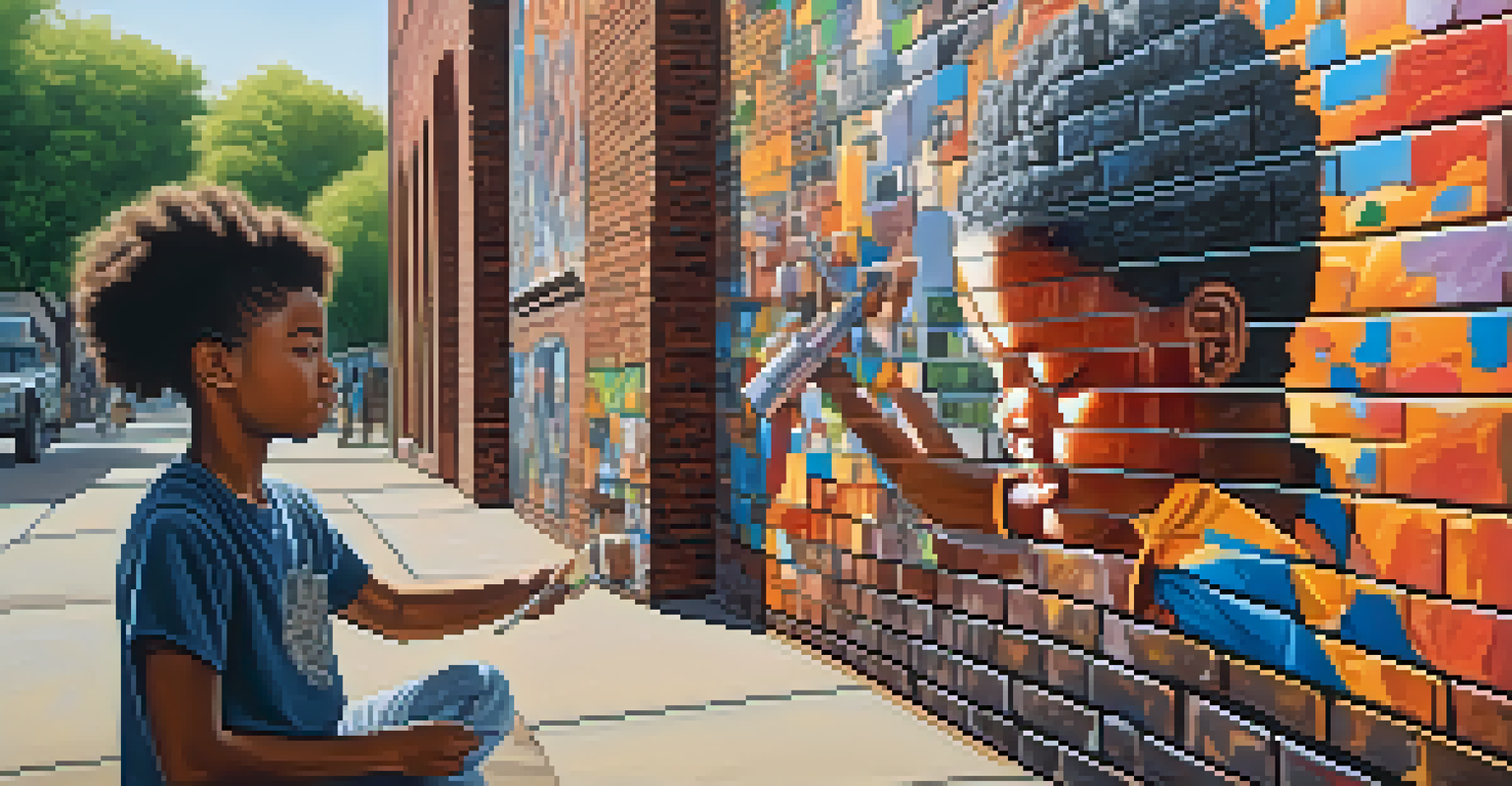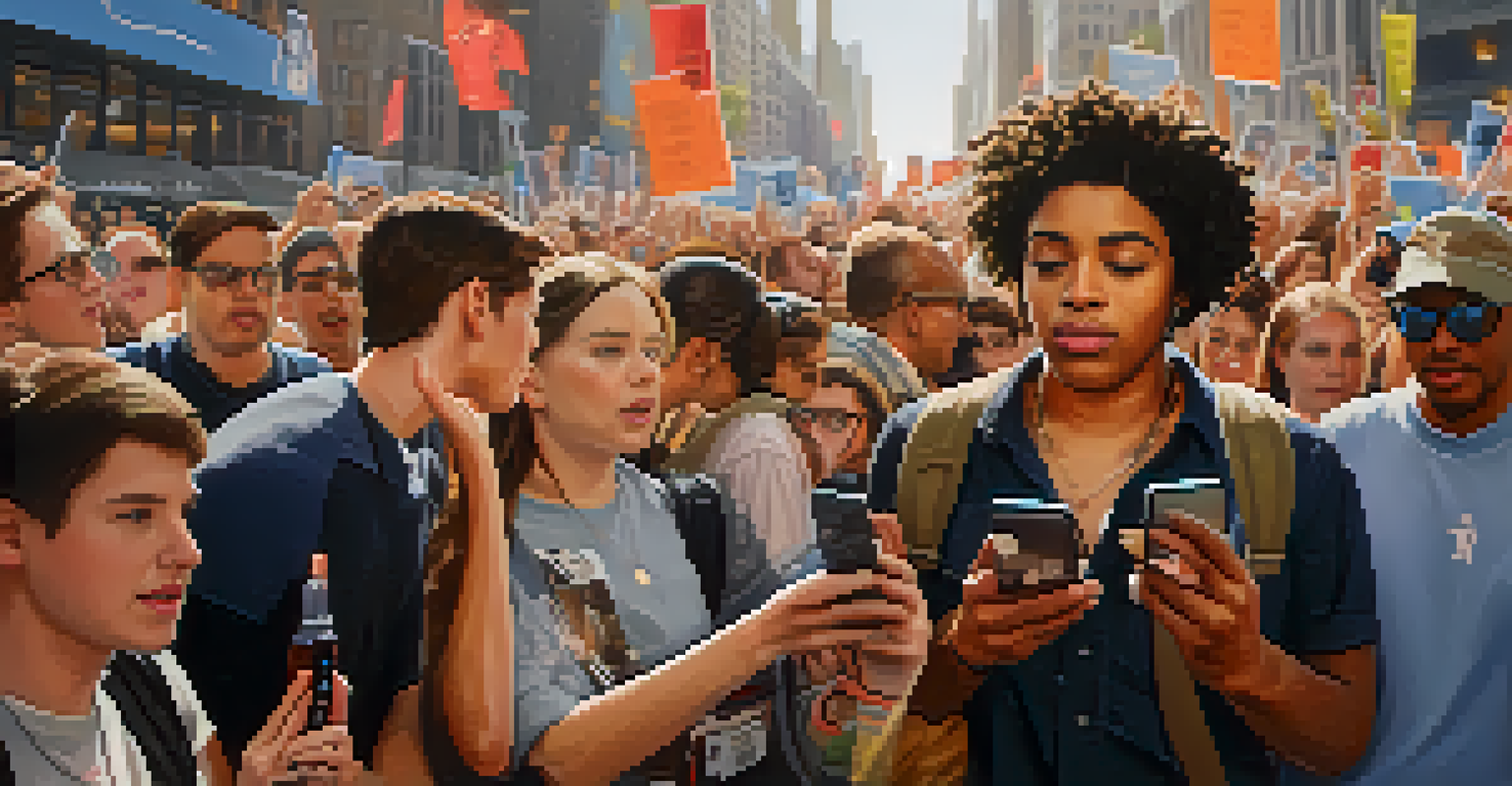Youth Activism and Racial Justice in New York City

Understanding Youth Activism in NYC's Landscape
Youth activism in New York City is a vibrant and powerful force. It encompasses a diverse range of issues, with racial justice being at the forefront. Young people, fueled by passion and a desire for change, are increasingly taking a stand against systemic inequalities. Their activism is not just a trend; it's a fundamental shift in how generations engage with social issues.
The future belongs to those who believe in the beauty of their dreams.
In recent years, we've seen a surge of youth-led movements that address racial injustice, inspired by historical events and contemporary struggles. Groups like Black Lives Matter have provided a platform for young advocates to voice their concerns. This activism is often characterized by creativity and innovation, utilizing social media and art to amplify their messages and mobilize their peers.
Moreover, the interconnectedness of issues such as education, healthcare, and policing intensifies youth activism. Today’s youth recognize that racial justice isn’t an isolated issue; it’s intertwined with various social justice causes. This holistic approach allows them to build coalitions across different movements, enhancing their impact and reach.
Key Issues Driving Youth Activism for Racial Justice
Several critical issues drive youth activism for racial justice in NYC, including police reform, educational equity, and economic justice. The harsh realities of police brutality have sparked outrage and mobilized young people to demand accountability and change. Events like the protests following George Floyd's death illuminated the urgent need for reform, and youth played a significant role in these demonstrations.

Additionally, educational inequality remains a pressing concern. Young activists are advocating for equitable access to quality education, highlighting how systemic racism affects school funding and resources. They are not just calling for change; they are proposing actionable solutions, such as reforming disciplinary policies that disproportionately affect students of color.
Youth Drive Racial Justice Movement
Young activists in NYC are leading the charge for racial justice, addressing interconnected issues like police reform, educational equity, and economic justice.
Economic disparities further fuel the youth’s passion for racial justice. Many young people are fighting against the wealth gap that affects communities of color, advocating for policies that promote job creation and fair wages. By addressing these intertwined issues, youth activists are laying the groundwork for a more just society.
The Role of Social Media in Youth Activism
Social media has become an indispensable tool for youth activism, enabling quick and widespread dissemination of information. Platforms like Instagram, Twitter, and TikTok allow young people to share their stories, organize events, and rally support for their causes. This digital landscape encourages creativity, with many using art and memes to engage their audience emotionally.
Injustice anywhere is a threat to justice everywhere.
Moreover, social media provides a space for marginalized voices to be heard and amplified. Activists can share personal experiences that highlight systemic issues, creating a deeper understanding among their peers. This grassroots approach fosters a sense of community and solidarity, making activism feel accessible to everyone, not just those with formal political training.
However, the reliance on social media also comes with challenges, such as misinformation and digital fatigue. Activists must navigate these hurdles while maintaining momentum. Despite these obstacles, the power of social media in connecting and mobilizing youth cannot be overstated—it has transformed how activism is conducted in the 21st century.
Grassroots Organizations Amplifying Youth Voices
Numerous grassroots organizations in NYC are dedicated to amplifying youth voices in the fight for racial justice. Groups like Youth United for Change and the New York City Youth Leadership Council empower young people to take leadership roles within their communities. These organizations provide resources, training, and mentorship, enabling youth to become effective advocates for change.
Through workshops and community engagement, these groups educate young activists about their rights and the political process. They encourage participation in local government meetings and civic activities, fostering a sense of agency among youth. This holistic approach ensures that young activists are not only informed but also active participants in shaping policies that affect their lives.
Social Media Fuels Activism
Platforms like Instagram and Twitter have become essential tools for youth to share their stories, organize events, and mobilize support for their causes.
Importantly, these organizations often collaborate with established civil rights groups, creating a bridge between generations of activists. This collaboration fosters a sense of continuity and shared purpose, allowing the wisdom of older activists to guide the passion of the youth. Together, they work towards a more equitable future.
Notable Youth-Led Movements in NYC
Several notable youth-led movements have emerged in NYC, capturing national attention and inspiring others. The March for Our Lives, initially focused on gun reform, has expanded its mission to address broader issues, including racial justice. This movement exemplifies how young people can pivot and adapt their advocacy to encompass various social justice issues.
Another prominent example is the climate justice movement, where youth activists argue that environmental issues disproportionately affect communities of color. By linking climate activism with racial justice, these young leaders highlight the interconnectedness of social issues, amplifying their overall message. Such movements demonstrate the innovative approaches youth are taking to create inclusive dialogues.
Additionally, the recent rise of youth-led initiatives during the COVID-19 pandemic showcases their resilience and adaptability. Young activists organized mutual aid networks to support marginalized communities, further solidifying their role as essential agents of change. These movements not only address immediate needs but also challenge systemic inequities, reminding us of the power of collective action.
Challenges Faced by Young Activists
Despite their determination and passion, young activists face numerous challenges in their pursuit of racial justice. One major hurdle is the lack of resources and funding for youth-led initiatives. Many organizations struggle to secure grants or sponsorships, limiting their ability to organize events and campaigns effectively.
Additionally, young activists often encounter skepticism from older generations, who may underestimate their commitment or capabilities. This generational disconnect can be disheartening, but many youth leaders rise above it by demonstrating their knowledge and passion. They remind us that age does not define one’s ability to effect change.
Grassroots Groups Empower Youth Voices
Grassroots organizations in NYC provide resources and mentorship to young activists, fostering leadership and collaboration across generations in the fight for racial justice.
Finally, the emotional toll of activism can be overwhelming. Constantly confronting issues like racism and injustice can lead to burnout and mental fatigue. It's essential for young activists to prioritize self-care and seek support within their communities, ensuring they remain resilient in their fight for justice.
The Future of Youth Activism and Racial Justice
Looking ahead, the future of youth activism and racial justice in NYC appears promising. Young people are increasingly aware of the interconnectedness of social issues, fostering a more holistic approach to activism. As they continue to engage with their communities, we can expect innovative solutions and collaborations to emerge.
Moreover, the growing emphasis on inclusivity within movements suggests a brighter future. Youth activists are prioritizing intersectionality, understanding that racial justice must encompass various identities and experiences. This commitment to inclusivity will strengthen their efforts and create a more equitable society.

Ultimately, the resilience and determination of today’s youth will shape the landscape of activism for years to come. As they harness their creativity and passion, they will continue to challenge the status quo, ensuring that the fight for racial justice remains vibrant and dynamic. The voices of young activists are not just a moment in time; they are a catalyst for lasting change.